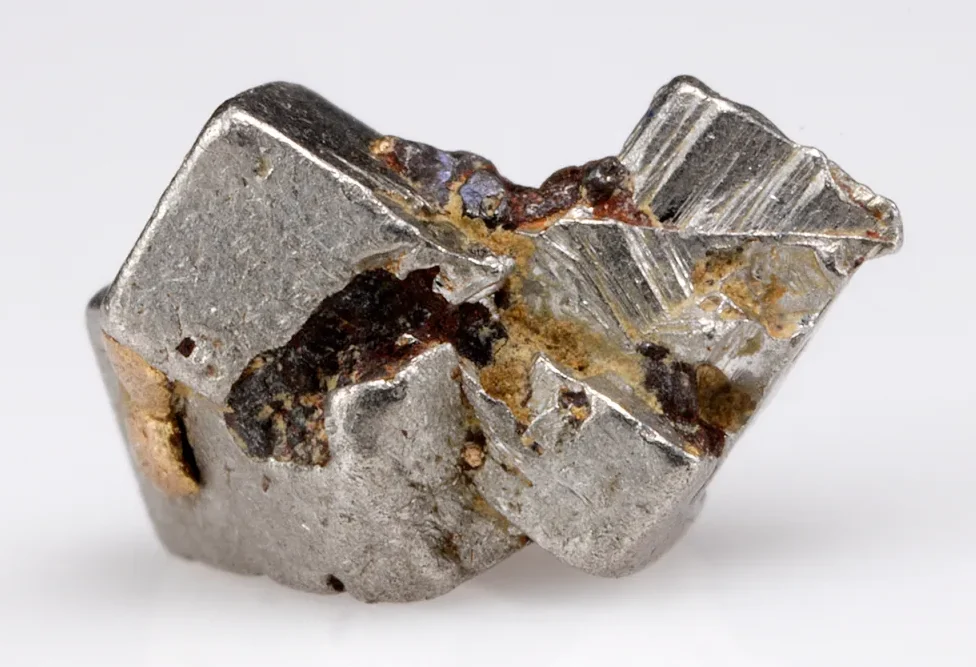Unveiling the Mysteries of Platinum: The Ultimate Guide to this Precious Metal
Welcome to the captivating world of platinum! This extraordinary precious metal holds a mystique like no other, boasting an allure that has fascinated humans for centuries. From its stunning physical properties to its historical significance and modern-day applications, platinum is truly a remarkable element worth exploring. So join us on this journey as we unveil the mysteries of platinum and delve into all its fascinating characteristics, compounds, uses, and more. Whether you’re a jewelry enthusiast, an investor seeking valuable insights or simply someone curious about this symbol of prestige – prepare to be captivated by the ultimate guide to platinum!
Characteristics of Platinum
Physical Characteristics:
Platinum, with its lustrous silver-white appearance, is a metal that captivates the eye. It has a high melting point of 1768 degrees Celsius, making it incredibly resistant to heat. In fact, platinum is known for being one of the most durable and densest metals in existence.
Chemical Characteristics:
One of the defining characteristics of platinum is its exceptional resistance to corrosion and tarnish. Unlike other precious metals like gold or silver, platinum remains virtually unaffected by exposure to chemicals or environmental factors. This makes it an ideal choice for jewelry and industrial applications where longevity and durability are paramount.
Isotopes of Platinum:
Platinum boasts several isotopes, including stable ones such as platinum-192, platinum-194, and platinum-195. These isotopes have distinct atomic structures but share similar chemical properties. However, there are also unstable isotopes that undergo radioactive decay over time.
Occurrence of Platinum:
Although rare compared to other elements on Earth’s crust, small amounts of naturally occurring platinum can be found alongside nickel and copper deposits. Additionally, significant reserves exist in South Africa and Russia – two countries responsible for most global production.
Physical Characteristics
When it comes to the physical characteristics of platinum, this precious metal is truly one-of-a-kind. Known for its stunning silver-white color and brilliant luster, platinum stands out among other metals. Its unique appearance has made it a popular choice in jewelry design.
Platinum is also incredibly dense and heavy, weighing almost twice as much as gold. This density gives it a substantial feel when worn or held in the hand. The weightiness of platinum adds to its luxurious appeal and makes it highly desirable for those seeking a high-quality piece of jewelry.
In addition to its visual appeal and heft, platinum boasts exceptional strength and durability. It is resistant to tarnish, corrosion, and wear, making it an excellent choice for everyday wear or special occasions. Platinum’s robust nature ensures that your jewelry pieces will stand the test of time without losing their beauty or integrity.
Furthermore, platinum exhibits outstanding thermal conductivity properties which means that it can quickly transfer heat from one object to another. This characteristic makes platinum ideal for use in various industrial applications such as catalytic converters in automobiles and electrical components.
The physical characteristics of platinum make it a sought-after metal both in the world of fine jewelry as well as in various industries where its unique properties shine through. From its captivating color and shine to its impressive strength and thermal conductivity capabilities, there’s no denying that platinum truly stands apart from other metals on many levels!
Chemical Characteristics
Platinum, a precious metal known for its stunning beauty and rarity, possesses several unique chemical characteristics that set it apart from other elements. One of the most notable features of platinum is its resistance to corrosion. Unlike many other metals, platinum does not easily react with oxygen or acids, making it highly valuable in various industrial applications.
In addition to its resistance to corrosion, platinum also exhibits excellent catalytic properties. This means that it can facilitate chemical reactions without being consumed or altered itself. This property has made platinum an essential component in catalytic converters used in automobiles to reduce harmful emissions.
Furthermore, platinum is known for its ability to form complex compounds with other elements. It readily forms bonds with carbon and nitrogen atoms, allowing for the creation of intricate structures such as coordination complexes and organoplatinum compounds.
Another remarkable characteristic of platinum is its high melting point. With a melting point of 1,768 degrees Celsius (3,214 degrees Fahrenheit), platinum can withstand extremely high temperatures without losing its structural integrity.
Isotopes of Platinum
Platinum, with its atomic number 78, has a total of 34 known isotopes. Isotopes are different forms of an element that have the same number of protons but vary in the number of neutrons. These isotopes can be stable or radioactive.
Among the stable isotopes, platinum-195 is the most abundant, making up around 33% of natural platinum. It consists of 78 protons and 117 neutrons. Another stable isotope is platinum-194, which makes up approximately 33% as well.
Platinum also has several radioactive isotopes, including platinum-190 and platinum-192. These isotopes undergo radioactive decay over time by emitting particles or energy until they reach a more stable form.
The diverse range of platinum isotopes allows scientists to study various aspects such as nuclear reactions and dating geological samples. Isotope analysis plays a crucial role in numerous fields like archaeology, geology, and environmental science.
Understanding the different isotopic compositions helps researchers determine the origin and history of certain materials containing platinum. This knowledge aids in unraveling mysteries related to Earth’s formation and past events on our planet.
Occurrence of Platinum
Platinum, the precious metal known for its rarity and beauty, is also quite elusive when it comes to its occurrence in nature. Unlike gold or silver, which can be found in substantial quantities around the world, platinum is much more scarce. It is estimated that only about 5-10 tons of platinum are mined annually.
One of the main sources of platinum is through mining operations that extract other minerals such as nickel and copper. These ores often contain small amounts of platinum as a byproduct. Additionally, significant deposits of platinum can be found in certain regions such as South Africa, Russia, and Canada.
Interestingly enough, one unique characteristic about platinum’s occurrence is that it tends to form nuggets rather than being evenly distributed throughout a rock or ore deposit. This makes it even harder to extract and separate from other metals during the refining process.
Due to its scarcity in nature and difficulty in extraction, platinum has become highly valued and sought after for various applications ranging from jewelry to industrial uses. Its limited availability adds to its allure and prestige among consumers.
Compounds of Platinum
Platinum, known for its exquisite beauty and rarity, is not only used in its pure form but also finds application in various compounds. These compounds of platinum possess unique properties and play a crucial role in several industries.
One group of compounds worth mentioning is the platinum halides. These include platinum chloride (PtCl2) and platinum bromide (PtBr2), which are commonly used as catalysts in chemical reactions. They exhibit excellent stability and can efficiently facilitate numerous organic transformations.
Another important class of compounds is the platinum oxides. Platinum dioxide (PtO2) and platinum tetroxide (PtO4) are highly reactive substances that find applications in catalysis, fuel cells, and even as analytical reagents due to their ability to interact with other chemicals.
Apart from halides and oxides, there are also other notable compounds of platinum such as potassium hexachloroplatinate(IV) [K2PtCl6] or ammonium hexachloroplatinate(IV) [(NH4)2[ PtCl6]]. These coordination complexes have diverse uses ranging from electroplating to pharmaceutical research.
The range of compound options highlights the versatility of this precious metal beyond its solid state. Each compound has distinctive characteristics that make it suitable for specific purposes across multiple industries where precision matters.
Understanding the different compounds of platinum allows us to appreciate the vast potential this precious metal holds beyond its pure form. Whether it’s serving as a catalyst or playing a vital role in cutting-edge technologies, these compounds continue to push boundaries while showcasing the remarkable qualities that make platinum truly exceptional.
Platinum Halides
Platinum halides are compounds formed when platinum combines with various halogens, such as chlorine, bromine, and iodine. These compounds play a crucial role in different industries and have unique properties that make them valuable.
One of the most well-known platinum halides is platinum(II) chloride (PtCl2). This compound has a yellow color and is used in catalytic processes for organic synthesis. It serves as an important catalyst for reactions like hydrogenation and dehydrogenation.
Another significant platinum halide is platinum(IV) chloride (PtCl4), which appears as a reddish-brown solid. This compound finds applications in the production of other platinum compounds and acts as a precursor for various chemical reactions.
Furthermore, there are also mixed-halide complexes of platinum that combine multiple halogens. These complexes exhibit diverse properties depending on the specific combination of halogens involved.
The study of platinum halides allows scientists to understand their unique characteristics and explore their potential applications across different fields like medicine, materials science, and environmental research. The versatility of these compounds highlights the significance of exploring further advancements in this area to unlock new possibilities.
Platinum Oxides
Platinum oxides are a group of compounds that consist of platinum and oxygen atoms. These compounds play a significant role in various applications, from catalysis to electronics. Let’s delve into the world of platinum oxides and uncover their unique properties.
One important oxide is Platinum(IV) oxide (PtO2), which is known for its dark brown or black appearance. It is highly stable and has excellent electrical conductivity, making it useful in electronic devices such as sensors and fuel cells.
Another prominent platinum oxide is Platinum(II) oxide (PtO). This compound exhibits different colors depending on its crystalline structure – yellow when it forms monoclinic crystals, and red-brown when it forms rhombohedral crystals. Researchers have found potential uses for PtO in various fields, including photocatalysis and gas sensing.
Additionally, there are other lesser-known platinum oxides like Platinum(III) oxide (Pt2O3), which can be formed under specific conditions. These compounds possess interesting properties that scientists continue to explore for future applications.
Understanding the behavior of these platinum oxides at a molecular level enables researchers to develop new materials with enhanced functionalities. By harnessing their unique characteristics, we can unlock innovative solutions across multiple industries.
Other Platinum Compounds
In addition to platinum halides and oxides, there are various other compounds that contain platinum. These compounds showcase the versatility of this precious metal in different chemical reactions and applications.
One such compound is platinum sulfide (PtS), which is commonly used as a catalyst in organic chemistry reactions. Its unique properties make it an ideal choice for promoting specific chemical transformations, leading to the synthesis of important compounds.
Another notable compound is platinum chloride (PtCl2), which has been studied for its potential use in cancer treatment. Research suggests that this compound could have cytotoxic effects on cancer cells, making it a promising candidate for future drug development.
Platinum nitrate (Pt(NO3)4) is yet another compound worth mentioning. It finds application in analytical chemistry as a reagent for detecting certain elements or functional groups. Its ability to form colored complexes with specific substances allows scientists to identify and quantify them accurately.
These examples highlight just a few of the many other platinum compounds that exist. Each one offers unique properties and potential applications across various fields of science and industry. The study of these compounds continues to expand our understanding of how platinum can be harnessed effectively in different areas.
History of Platinum
The Platinum has a rich and fascinating history that dates back centuries. Its unique properties and scarcity have made it highly prized throughout the ages.
Long before platinum was officially recognized as a precious metal, ancient civilizations utilized its natural beauty for decorative purposes. The Egyptians, for instance, incorporated platinum in their jewelry designs, admiring its lustrous appearance and durability.
It wasn’t until the late 16th century that Europeans first encountered platinum during their explorations in South America. Initially regarded as an unwanted impurity in silver mines, early Spanish conquistadors even referred to it as “platina,” meaning little silver.
However, due to its high melting point and resistance to corrosion, separating platinum from other metals proved challenging. It took several more centuries before scientists began understanding the true value of this enigmatic metal.
In the early 19th century, with advancements in technology and chemistry knowledge expanding rapidly, platinum’s true potential became evident. Its exceptional catalytic properties led to its widespread use in various industries such as automobile manufacturing and chemical production.
Furthermore, during World War II, platinum played a crucial role in military applications like aircraft engines and communication devices due to its ability to withstand extreme conditions.
With increasing demand for sustainable energy solutions such as fuel cells or hydrogen-powered vehicles gaining popularity worldwide; platinum’s continues to play an essential role. As one of the key components used in these technologies’ catalysts systems; it acts as a facilitator for clean energy production by promoting reactions that result in minimal environmental impact.
Early Uses of Platinum
platinum’s, with its remarkable properties and unique characteristics, has a long history dating back centuries. The early uses of platinum’s can be traced to ancient civilizations who recognized its value and versatility.
One of the earliest known uses of platinum’s was by the ancient Egyptians, who used it in their jewelry. They admired its beauty and rarity, often incorporating it into their intricate designs. Platinum’s durability and resistance to tarnish made it highly desirable for adornment.
In South America, the indigenous people of Colombia were skilled in working with platinum’s long before European explorers arrived. They crafted stunning artifacts using this precious metal, showcasing their advanced metallurgical skills.
During the Middle Ages in Europe, platinum’s was referred to as “white gold” due to its resemblance to silver. It gained popularity among royalty and nobility for crafting luxurious tableware and ornate decorations.
The scientific community also recognized the potential of platinum’s. In the late 18th century, chemists began experimenting with platinum’s compounds for various applications including medicinal purposes and as catalysts in chemical reactions.
These early uses of platinum’s laid a foundation for further exploration into its vast possibilities. As time went on, scientists discovered even more applications for this exceptional metal across industries such as technology, medicine, automotive manufacturing,and more.
European Discovery of Platinum
platinum’s, a precious metal with a rich history and allure, has captivated humans for centuries. The story of its discovery in Europe is an intriguing tale that showcases the ingenuity and curiosity of explorers.
In the late 16th century, Spanish conquistadors ventured into South America in search of gold and other valuable treasures. Little did they know that their quest would lead them to stumble upon platinum’s. At first, these early explorers dismissed it as an impurity interfering with their gold mining operations.
However, platinum’s unique properties soon caught the attention of European scientists. In the 18th century, Antonio de Ulloa, a Spanish scientist and explorer who accompanied one of these expeditions to South America, brought back samples of this mysterious metal to Spain.
Word quickly spread throughout Europe about this new substance that resisted corrosion and possessed remarkable strength. Scientists began conducting experiments to uncover its true nature and potential uses.
It was not until the 19th century that advancements in technology allowed for large-scale production of platinum’s. This breakthrough paved the way for diverse applications across various industries such as jewelry making, automotive manufacturing, electronics, medicine, and more.
The European discovery of platinum’s marked a turning point in our understanding of precious metals and opened up endless possibilities for innovation. Its scarcity and desirability have made it synonymous with luxury and prestige ever since.
Production of Platinum
platinum’s is a rare and valuable metal that requires complex processes to extract and refine. Its production involves several stages, starting with mining. platinum’s deposits are typically found alongside other valuable minerals such as palladium, rhodium, gold, and silver. Once the ore is mined, it goes through a series of crushing and grinding processes to obtain a fine powder.
The next step in platinum’s production is smelting. The powdered ore is heated at high temperatures to separate the platinum from other elements. This process involves the use of chemicals and specialized equipment to achieve a pure concentrate.
After smelting, the resulting concentrate undergoes further refining through various methods such as electrolysis or chemical precipitation. These techniques help remove impurities and increase the purity of platinum.
Once refined, the platinum can be shaped into different forms like bars or sheets for industrial use or crafted into jewelry pieces by skilled artisans.
Due to its scarcity and labor-intensive extraction process, platinum production is limited compared to other metals like gold or silver. However, advancements in technology have made it more efficient and sustainable over time.
Applications of Platinum
Platinum, with its exceptional properties and rarity, finds itself in a wide range of applications across various industries. Its high melting point and resistance to corrosion make it ideal for use in catalytic converters. These devices help reduce harmful emissions from vehicles, contributing to cleaner air quality.
In the field of medicine, platinum-based drugs have revolutionized cancer treatment. Compounds like cisplatin are used in chemotherapy to target and destroy cancer cells. Additionally, platinum is utilized in pacemakers due to its biocompatibility and electrical conductivity.
The jewelry industry also relies heavily on platinum’s beauty and durability. Its lustrous white appearance sets it apart from other precious metals, making it a popular choice for engagement rings and luxury accessories.
Platinum’s excellent electrical conductivity has led to its use in electronics manufacturing. It is found in electrodes, connectors, and even hard disk drives due to its ability to store large amounts of data.
Furthermore, platinum plays an integral role in the production of fuel cells which convert chemical energy into electricity efficiently without harmful emissions.
These are just some examples highlighting the versatility of platinum’s across industries ranging from automotive to healthcare and technology advancements. As research continues and new applications emerge, we can expect this remarkable metal’s worth only grow further!
Health Problems Related to platinum’s
Platinum, known for its elegance and beauty, has long been admired and sought after. However, it’s important to be aware that this precious metal is not without its health risks. While platinum’s itself is generally considered non-toxic and biocompatible, certain compounds of platinum’s can pose potential hazards.
One of the main health concerns associated with platinum’s is its ability to cause allergic reactions in some individuals. This condition, known as platinum’s sensitivity or allergy, can manifest as skin rashes, dermatitis, or even respiratory symptoms like asthma. It’s worth noting that these adverse reactions are relatively rare but can occur in sensitive individuals who come into direct contact with platinum’s-containing materials.
Another issue to consider is occupational exposure to platinum’s compounds. Workers in industries such as mining or refining may encounter high levels of airborne platinum’s particles or fumes. Prolonged inhalation of these substances can lead to respiratory problems such as bronchitis or irritation of the nose and throat.
In addition to direct contact and inhalation risks, there is also concern about the potential carcinogenic effects of certain forms of platinum’s compounds. Studies have shown that long-term exposure to specific types of soluble platinum’s salts may increase the risk of developing cancer.
To protect against potential health problems related to platinum’s exposure, it’s essential for workers handling this metal and its compounds on a regular basis to follow proper safety protocols including wearing protective clothing and using appropriate ventilation systems.
While it’s important not to overlook the possible health risks associated with working with or being exposed to certain forms of platinum’s compounds; when used responsibly and under controlled conditions in industrial settings where safety measures are implemented; Platinum continues to play a valuable role in various applications due its unique properties.
Symbol of Prestige in Marketing
platinum’s has long been associated with luxury and exclusivity, making it a symbol of prestige in the world of marketing. Its rarity and unique properties have made it highly coveted by those seeking to convey status and sophistication.
In the realm of luxury goods, platinum’s is often used to enhance the allure and desirability of high-end products. From watches to jewelry, including engagement rings and other fine accessories, platinum’s lustrous appearance adds an air of elegance that cannot be matched by other metals.
Brands that use platinum’s in their marketing campaigns are able to tap into its prestigious reputation. By incorporating this precious metal into their designs or showcasing it as a signifier of quality craftsmanship, they not only attract discerning customers but also elevate their brand image.
The association between platinum’s and prestige extends beyond fashion and jewelry. In industries such as automotive, where performance and luxury go hand-in-hand, manufacturers utilize platinum’s accents or badges on their vehicles to signify superior quality and engineering excellence.
Moreover, even in sectors unrelated to physical products, companies can leverage the prestige associated with platinum’s. Whether it’s using the term “platinum’s” in product names or employing imagery evocative of this rare metal in advertising materials, businesses can create a sense of exclusivity around their offerings.
When utilized strategically in marketing efforts across various industries, platinum’s serves as a powerful symbol of prestige that resonates with consumers who aspire for authenticity and refinement. Its association with opulence continues to captivate audiences worldwide while reinforcing brands’ commitment to delivering exceptional experiences.
Platinum as an Investment
platinum’s has long been recognized as a valuable asset, not just for its industrial applications, but also as an investment option. Its rarity and unique properties make it an attractive choice for investors looking to diversify their portfolios.
One of the main reasons why platinum’s is considered a solid investment is its limited supply. Unlike other precious metals like gold or silver, platinum’s production is relatively low. This scarcity factor contributes to its high value and makes it an appealing choice for those seeking alternative investments.
Investing in platinum’s can offer potential benefits such as hedging against inflation and currency fluctuations. Since platinum’s is traded on global commodity markets, its price movements are influenced by various economic factors. When the value of traditional currencies declines or inflation rises, the demand for tangible assets like platinum’s tends to increase.
Furthermore, platinum’s importance in various industries adds another layer of attractiveness to its investment potential. It plays a crucial role in automotive catalytic converters, jewelry manufacturing, electronics, and even healthcare equipment. As these industries continue to grow globally, so does the demand for this precious metal.
However, investing in platinum’s does come with risks that should be carefully considered. Like any investment, the price of platinum’s can fluctuate significantly due to market conditions or geopolitical events beyond your control. It’s essential to conduct thorough research and consult with financial professionals before making any investment decisions.
Conclusion
platinum’s, a beautiful and rare precious metal, holds many secrets within its shimmering exterior. With its unique physical and chemical characteristics, platinum’s has captivated scientists and jewelers alike for centuries. From its isotopes to its occurrence in nature, there is much to learn about this fascinating element.
The compounds of platinum’s further showcase the versatility of this metal. platinum’s halides, oxides, and other compounds have various uses in industries ranging from medicine to catalysis. These compounds play a crucial role in modern technology and scientific advancements.
The history of platinum’s reveals a rich tapestry of early uses by ancient civilizations as well as the European discovery that sparked global interest in this remarkable metal. Its production methods have evolved over time, but the demand for platinum’s remains high due to its myriad applications across multiple industries.
Speaking of applications, platinum’s is highly sought after in fields such as jewelry making, automotive manufacturing, electronics production, and even healthcare. Its durability, malleability, resistance to corrosion make it an ideal choice for these diverse areas.
While platinum’s offers numerous benefits and practical uses in various sectors of society; it’s important to note that prolonged exposure or improper handling can lead to health problems related to toxicity. Proper precautions should always be taken when working with or wearing objects made from platinum’s.
Symbolizing prestige and luxury in marketing campaigns worldwide; the allure of owning something crafted from this exquisite metal cannot be denied. Whether it’s a statement piece adorning someone’s neck or an elegant watch gracing their wrist -platinum signifies elegance like no other material.







